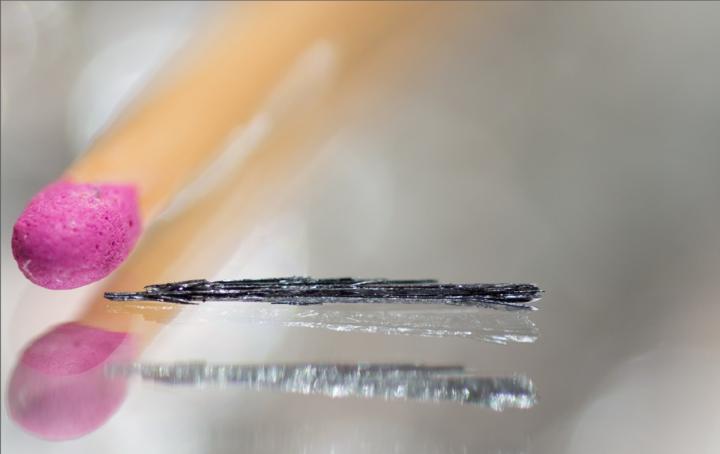
The material is a modified form of perovskite, a mineral of great interest to developers of solar cells. A ferromagnetic photovoltaic material, its magnetic properties can be changed reversibly by heating. The EPFL researchers, led by post-doc Bálint Náfrádi, developed the organometallic substance, which contains manganese and lead, and in a paper in the journal Nature Communications they explain that it combines the properties of ferromagnetism, where structures that give rise to magnetism are aligned in a well-defined order, and photoconductivity, where shining light on the material generates free-moving electrons within its structure.
The combination of these two properties means that light frees electrons, which effectively "melt" magnetic structures inside the crystal. This can be achieved with a simple red LED, much weaker even than a laser pointer. The timescale for this transformation is a order of femtoseconds.
Although very much in the experimental state, these materials could, according to Náfrádi, be the basis for low-energy, high-capacity memory storage systems.
" These would combine the advantages of magnetic storage – long-term stability, high data density, nonvolatile operation and rewritability – with the speed of optical reading and writing," he said.




Nanogenerator consumes CO2 to generate electricity
Whoopee, they've solved how to keep a light on but not a lot else.